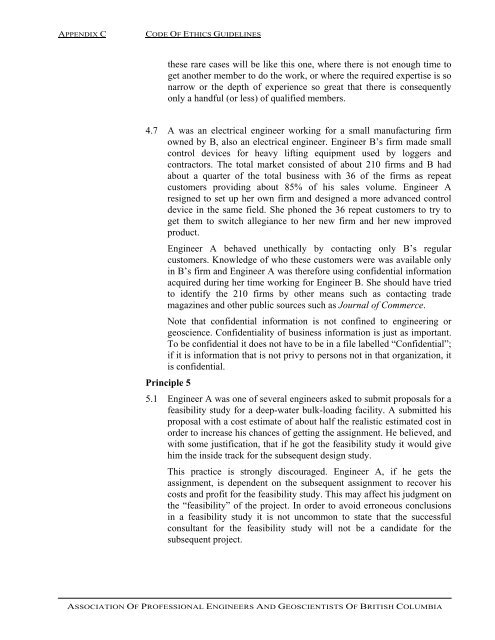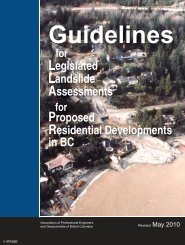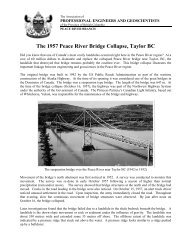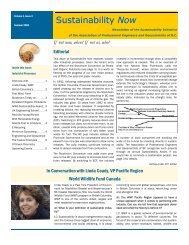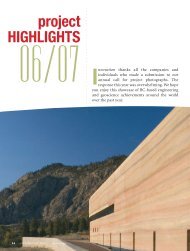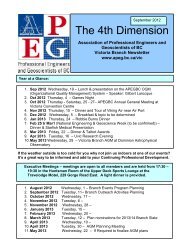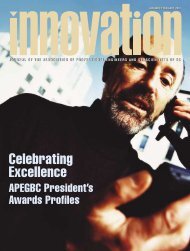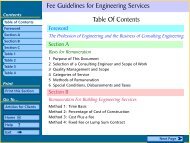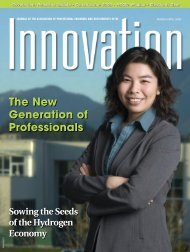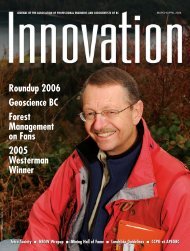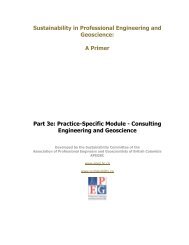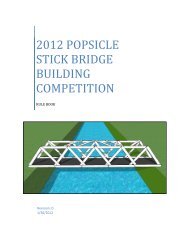Code of Ethics Guidelines - APEGBC
Code of Ethics Guidelines - APEGBC
Code of Ethics Guidelines - APEGBC
Create successful ePaper yourself
Turn your PDF publications into a flip-book with our unique Google optimized e-Paper software.
APPENDIX C CODE OF ETHICS GUIDELINES<br />
these rare cases will be like this one, where there is not enough time to<br />
get another member to do the work, or where the required expertise is so<br />
narrow or the depth <strong>of</strong> experience so great that there is consequently<br />
only a handful (or less) <strong>of</strong> qualified members.<br />
4.7 A was an electrical engineer working for a small manufacturing firm<br />
owned by B, also an electrical engineer. Engineer B’s firm made small<br />
control devices for heavy lifting equipment used by loggers and<br />
contractors. The total market consisted <strong>of</strong> about 210 firms and B had<br />
about a quarter <strong>of</strong> the total business with 36 <strong>of</strong> the firms as repeat<br />
customers providing about 85% <strong>of</strong> his sales volume. Engineer A<br />
resigned to set up her own firm and designed a more advanced control<br />
device in the same field. She phoned the 36 repeat customers to try to<br />
get them to switch allegiance to her new firm and her new improved<br />
product.<br />
Engineer A behaved unethically by contacting only B’s regular<br />
customers. Knowledge <strong>of</strong> who these customers were was available only<br />
in B’s firm and Engineer A was therefore using confidential information<br />
acquired during her time working for Engineer B. She should have tried<br />
to identify the 210 firms by other means such as contacting trade<br />
magazines and other public sources such as Journal <strong>of</strong> Commerce.<br />
Note that confidential information is not confined to engineering or<br />
geoscience. Confidentiality <strong>of</strong> business information is just as important.<br />
To be confidential it does not have to be in a file labelled “Confidential”;<br />
if it is information that is not privy to persons not in that organization, it<br />
is confidential.<br />
Principle 5<br />
5.1 Engineer A was one <strong>of</strong> several engineers asked to submit proposals for a<br />
feasibility study for a deep-water bulk-loading facility. A submitted his<br />
proposal with a cost estimate <strong>of</strong> about half the realistic estimated cost in<br />
order to increase his chances <strong>of</strong> getting the assignment. He believed, and<br />
with some justification, that if he got the feasibility study it would give<br />
him the inside track for the subsequent design study.<br />
This practice is strongly discouraged. Engineer A, if he gets the<br />
assignment, is dependent on the subsequent assignment to recover his<br />
costs and pr<strong>of</strong>it for the feasibility study. This may affect his judgment on<br />
the “feasibility” <strong>of</strong> the project. In order to avoid erroneous conclusions<br />
in a feasibility study it is not uncommon to state that the successful<br />
consultant for the feasibility study will not be a candidate for the<br />
subsequent project.<br />
ASSOCIATION OF PROFESSIONAL ENGINEERS AND GEOSCIENTISTS OF BRITISH COLUMBIA


